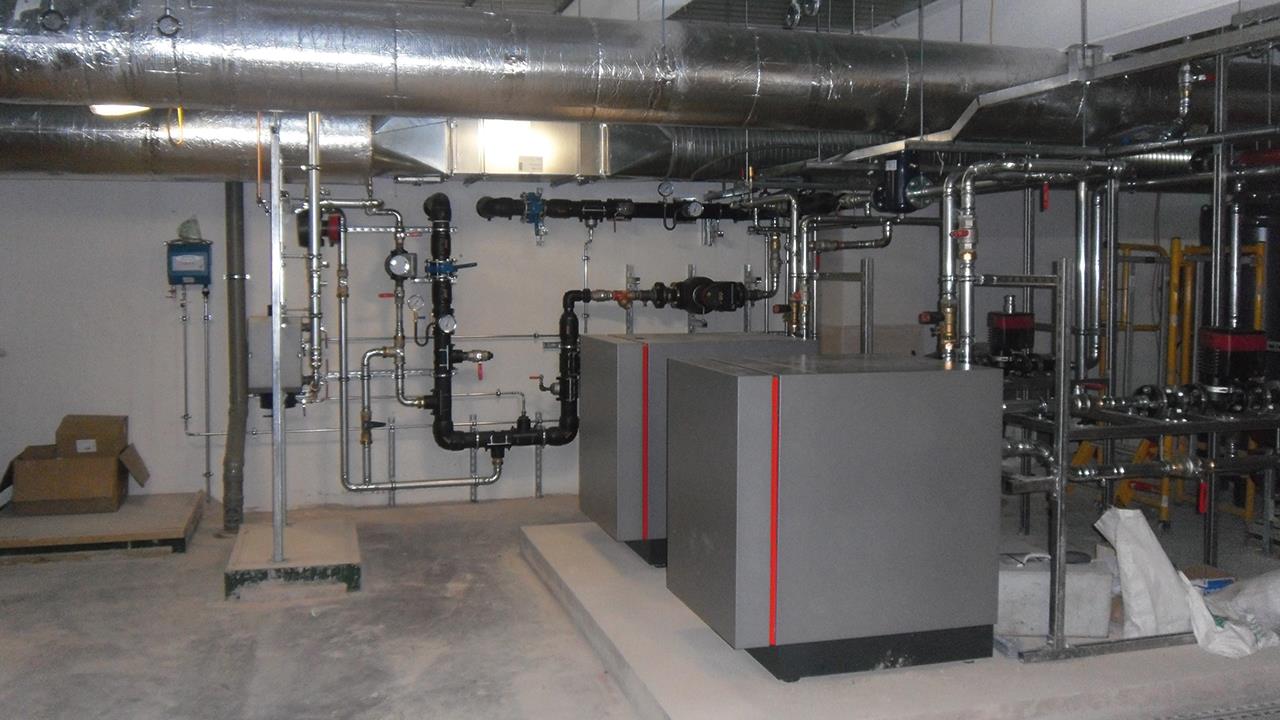

While architects and specifiers may demand 100% renewable systems and heating installers may prefer to stick with what they know, the most efficient and practical solution for today lies somewhere in the middle, says Hugh Jones, Product Manager at Viessmann UK.
Those installers working in the commercial newbuild environment will be familiar with Target CO2 Emissions Ratings (TER) and U-values. When consultants hit the physical and cost limitations of fabric measures, replacing the gas boiler with renewable heating can often achieve the critical building ‘pass’.
That’s great on paper and, as a result, for the past year in particular, our commercial team has spent much of its time handling enquiries from consultants wanting to achieve net-zero carbon by specifying a pure, or mono mode, heat pump solution.
While this may be feasible for smaller commercial properties that are designed for low energy operation – shops, medical centres, and educational facilities, for example. Sadly, however, it does not work to simply switch a boiler for a heat pump and expect the same performance and running costs.
We would struggle to cite a successful example in operation, yet there is widespread opinion that this is the only possible route for buildings designed in 2021 and beyond. There is no heat pump that delivers an 80°C flow temperature at a ground temperature of 0°C, while also meeting the required 2.8 Seasonal Coefficient of Performance.
We are kidding ourselves if we overlook the cost and environmental implications of powering these units as if they are boilers – also if we expect this technology on its own to keep building occupants comfortable all year round without the system becoming considerably more expensive.
The equipment cost for specifying a heat pump can be up to six-times greater than a gas condensing boiler, excluding any groundwork. Therefore, for higher flow temperature demand, an additional heat generator should be specified to cover the heat load.
A dual mode, hybrid, or bi-valent solution – complementing renewables such as heat pumps with traditional gas heating technologies – is sometimes better for the client and the environment. The same can be said of mono energetic systems within a dual mode operation, where the backup or peak boiler is an electric boiler (useful for newbuilds where there is no gas supply).
In 2021, we find ourselves in a kind of ‘no man’s land’ between gas/oil and a fossil fuel-free future post-2025. The Non-Domestic Renewable Heat Incentive has recently come to an end and current government policy is rather woolly. Therefore, dual mode installations are a great option, albeit with the challenge for the industry to design them well for effective operation and to save investment cost.
Whatever policy detail does eventually get announced, we are confident that dual mode systems will play a part – they have to. No one believes that the commercial sector will take up more than 10% of the government’s targeted 600,000 heat pump installations per year from 2028, or that a switch to 100% renewables can ever come overnight.
Manufacturers such as Viessmann are constantly working with contractors to help commission dual mode systems. While designs in some tenders challenge the traditional risk-averse view of plant room design, these issues are not going to go away and engineers must face them.
The hydrogen solution
Transitioning to hydrogen for space-heating would offer quick wins in the energy transition. That’s why it’s widely predicted that the UK’s mains gas grid could, in the not too distant future, supply a blend comprised of up to 80% natural gas and 20% hydrogen.
As manufacturers launch new gas boilers with hydrogen-ready labels, it’s advisable, with gases differing in their combustion properties, to check whether the combustion control of gas-fueled heating equipment is genuinely hydrogen-ready.
If you'd like to keep up-to-date with the latest developments in the heating and plumbing industry, why not subscribe to our weekly newsletters? Just click the button below and you can ensure all the latest industry news and new product information lands in your inbox every week.